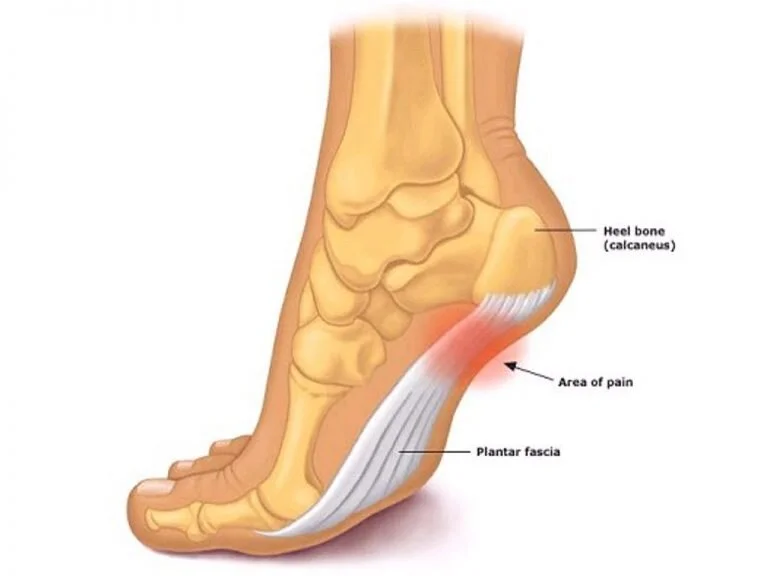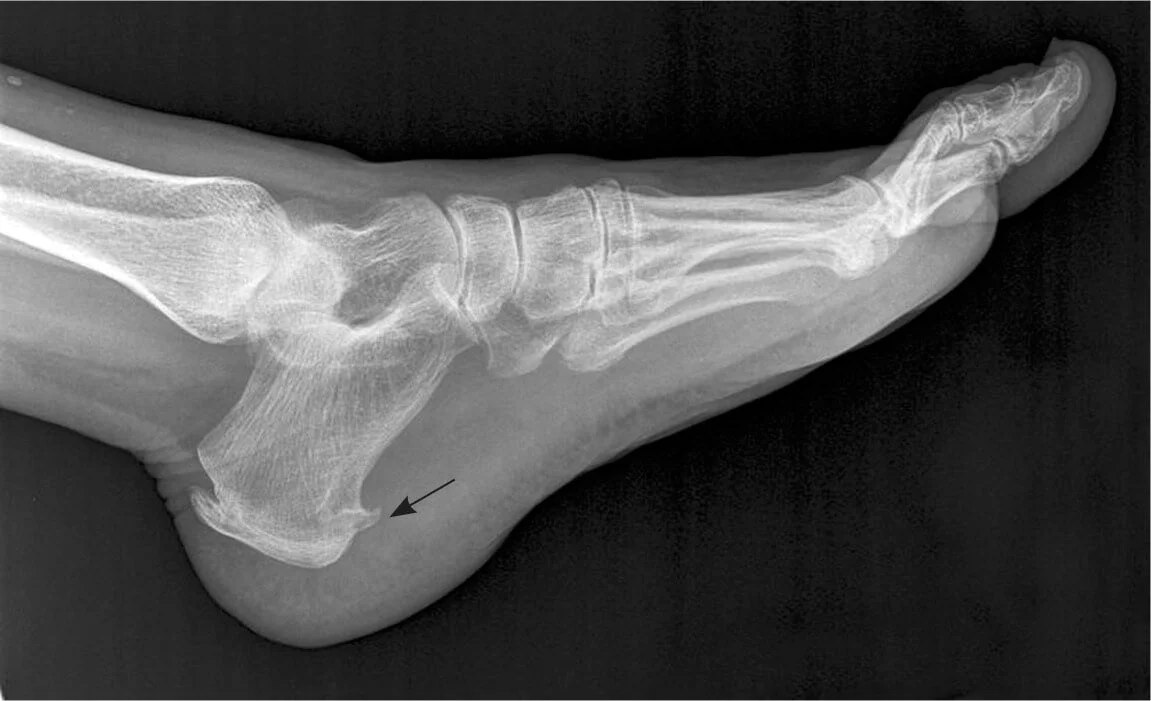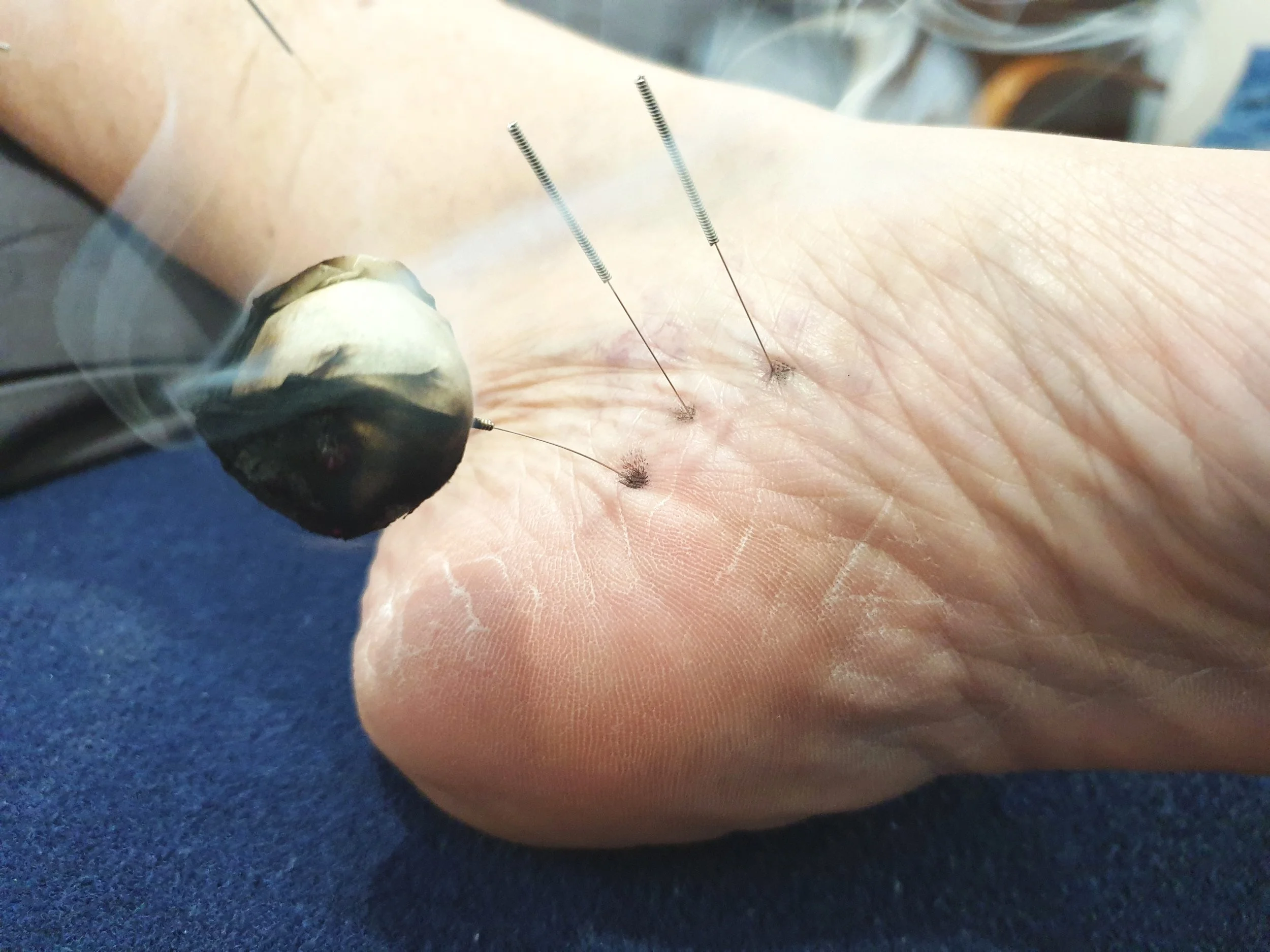Do you wake up each morning dreading that first painful step? Does a burning ache spread from your heel into your arches? If you've struggled to find relief—no matter what you try—and worry that you'll be stuck with this problem forever, you're not alone.
Plantar fasciitis can be relentless and frustrating, robbing you of mobility and joy in daily activities. Nearly one in five Australians suffer from foot pain, but not all foot pain is the same. Misdiagnosis is common, leading to continued, needless discomfort that hampers your quality of life. But there's hope.
Understanding what plantar fasciitis truly is—and how to diagnose it accurately—is the first step toward effective treatment. Knowing which therapies have solid scientific backing can save you time, money, and further pain.
Fortunately, acupuncture has shown significant promise in relieving this stubborn condition.
A 2017 review analysed four randomized controlled trials—the gold standard in medical research—and found that acupuncture provided substantial pain relief within 4 to 8 weeks.
But there's more to the story.
Drawing from over 10 years of practice, I'll share little-known insights about plantar fasciitis. This easy-to-understand, science-backed guide will show you why acupuncture may be your best tool in the fight against this debilitating condition.
Let's dive in and discover if acupuncture for plantar fasciitis is the effective solution you've been searching for.
Plantar fasciitis: a common cause of foot pain
If you've been suffering for months without relief, you're likely feeling frustrated and overwhelmed. It seems like everyone—from family to strangers—has advice about your foot pain. That's because plantar fasciitis is quite common.
In the USA, it's estimated that around 1% of the population experiences this type of pain each year. While this may vary by country, it's likely similar in other developed Western nations, including our own backyard. To put that into perspective, 1% of Australia's population equates to approximately 259,158 Australians each and every year. No wonder others are eager to share their experiences!
Understanding how widespread this condition is highlights the importance of finding an effective plantar fasciitis treatment. Exploring options like acupuncture for plantar fasciitis could be a vital step toward the relief you've been seeking.
Recognizing the Signs and Symptoms
But how do you know if your foot pain is actually plantar fasciitis? Identifying the distinctive signs and symptoms is crucial for proper diagnosis and effective treatment.
Common Symptoms of Plantar Fasciitis
Burning or sharp pain at the heel and arch of the foot: This discomfort often feels like a stabbing sensation and is usually localized to the bottom of the heel or the arch area.
Pain that's worse after periods of rest: You might notice the pain is most intense with your first steps in the morning or after sitting for a long time. This is commonly referred to as "morning pain."
Pain that's aggravated after prolonged activity: Prolonged standing, walking, or physical activity can exacerbate the pain. You may find that discomfort increases as the day goes on, especially if you've been on your feet for extended periods.
Pain that's aggravated by extending the toes or big toe: Stretching your foot by pulling your toes upward toward your shin can intensify the pain. This movement stretches the plantar fascia and may increase discomfort at the heel or arch, indicating irritation of the tissue.
Gradual onset of pain: The symptoms typically develop slowly over time, unless there's been a sudden change in exercise, training, or lifestyle.
Recognizing these symptoms early can lead to a quicker diagnosis and more effective treatment plan.
How Is Plantar Fasciitis Diagnosed?
Diagnosis is usually based on medical history and a physical examination.
Imaging studies, like X-rays, aren't always necessary but can be useful in ruling out other conditions, such as stress fractures that might be confused with plantar fasciitis.
An ultrasound may show thickening of the plantar fascia, which is common in people suffering from this condition and provides an important diagnostic clue.
What is plantar fasciitis? the common myth crippling your recovery
The plantar fascia is a thick and flat band of tissue called an aponeurosis that connects your heel bone to your toes. It helps support the arch of your foot and absorbs shock when you walk or run. An aponeurosis is similar to a tendon—both are made of strong, fibrous tissue designed to handle tension and stress.
The Misconception
Many people think acute inflammation – like redness, heat, swelling, and pain – is the main cause of plantar fasciitis because of the "-itis" ending, which usually refers to inflammation. However, research has shown that this is not completely accurate.
In many chronic cases, studies reveal that the condition is actually non-inflammatory. Instead of acute inflammation, the tissue degenerates, leading to what is called fasciosis.
This means the plantar fascia becomes thicker, with the collagen fibers breaking down and becoming disorganized, along with more blood vessels and nerve endings—all signs of poor tissue healing, not inflammation.
A Shift in Understanding
Recent research has updated this view by showing that there can be low-grade, chronic inflammation in the plantar fascia and other similar tissues, like tendons.
This type of inflammation is different from the sudden, noticeable inflammation you get from an acute injury, like a sprained ankle.
Instead, it’s a slow, ongoing process that keeps the tissue stuck in a cycle of poor healing and irritation. This low-level inflammation prevents proper repair, causing the plantar fascia to stay thickened, disorganized, and sensitive, leading to ongoing pain and dysfunction.
Why This Matters
Mistaking plantar fasciitis for an acute inflammatory condition often leads to treatments that don’t work. Many people take anti-inflammatory medications like Nurofen® or Voltaren®, but these usually don’t provide long-term relief because they target the wrong problem.
While these medications may reduce acute inflammation, they don’t address the degeneration and chronic low-grade inflammation that cause long-term pain.
Understanding that plantar fasciitis involves chronic tissue degeneration and impaired healing rather than acute inflammation is key.
Think of it as trying to fix a fraying rope (degeneration) rather than a rope that’s caught on fire (acute inflammation). Treatments that focus solely on putting out the "fire" (inflammation) miss the root cause of the problem— the ongoing damage to the tissue itself.
The Right Approach
Recognizing that plantar fasciitis is more about chronic tissue degeneration and low-grade inflammation leads to better treatments. By addressing the real issue—poor tissue repair and chronic irritation—you can break the cycle and finally get long-lasting relief from plantar fasciitis.
Dispelling Myths and Understanding the Real Cause of Plantar Fasciitis
Now that we've explored the misconceptions surrounding inflammation in plantar fasciitis, it's important to address other common myths that might be hindering your recovery.
What about heel spurs?
When experiencing heel and arch pain, you might be referred for an X-ray to rule out certain conditions. Sometimes, the results reveal a heel spur, which can mislead your plantar fasciitis treatment.
A heel spur sounds like a plausible cause of foot pain—after all, it conjures images of a sharp spike digging into your heel. However, finding a heel spur on a scan is often incidental, meaning it likely has nothing to do with your discomfort. Heel spurs are brittle calcifications of the plantar fascia—imagine stepping on a crispy potato chip rather than a solid spike.
Interestingly, heel spurs are present in up to 20% of the population, not just the 1% experiencing plantar fasciitis. This indicates that heel spurs do not necessarily equal pain.
What about flat feet?
Another common belief is that flat feet are a primary cause of plantar fasciitis. The arches in your feet help with movement, flexibility, and strength. In flat feet, this arch drops.
While biomechanical issues like flat feet have been linked to plantar fasciitis, studies show that these features are just as common in people without foot pain. For the overwhelming majority, changes in foot biomechanics play a trivial role in developing plantar fasciitis.
Structural abnormalities and asymmetries have also been debunked as the cause of other pain conditions.
So, What's the Real Culprit?
If neither heel spurs nor flat feet are the main causes, what leads to plantar fasciitis?
What Actually Causes Plantar Fasciitis?
As we've established, plantar fasciitis is a type of tissue degeneration. Researchers have connected plantar fasciitis to overuse and overloading of the plantar fascia. These frequent small insults lead to the degeneration of the tissue, causing pain and dysfunction.
Plantar fasciitis is more common in:
People who engage in excessive standing, walking, or running: Jobs or activities that require long periods on your feet can overload the plantar fascia. This is also a condition common in runners.
Individuals who have recently changed their exercise routine or lifestyle: Sudden increases in activity can challenge the tissue beyond its ability to repair and adapt.
People carrying excess weight: Additional weight stresses the feet, although this might be more related to metabolic factors than just mechanical load.
Those between the ages of 40 to 60: Age-related changes in tissue elasticity and healing capacity can contribute.
The Benefits of Acupuncture for Plantar Fasciitis
Many people have heard great things about acupuncture, but it's understandable that some remain skeptical. Fortunately, research has confirmed that the benefits of acupuncture are both real and well-supported. A recent, large review highlighted evidence for acupuncture across 122 conditions, with moderate to strong support for 46 of them. So, how can acupuncture and Chinese medicine help those suffering from plantar fasciitis?
1. Acupuncture Relieves Pain
Pain from plantar fasciitis is often caused by over sensitive nerves in the foot. Acupuncture helps calm these nerves, reducing the amount of danger signals they send to the brain. It also promotes the release of potent natural pain relievers in the brain and spinal cord, like endorphins, enkephalins, and dynorphins, for immediate relief.
2. Acupuncture Regulates Inflammation
Plantar fasciitis involves chronic low-grade inflammation rather than classic acute inflammation. Acupuncture helps by balancing pro- and anti-inflammatory responses, effectively reducing the persistent irritation that prevents tissue healing.
3. Acupuncture Promotes Healing
Acupuncture enhances blood circulation to the plantar fascia, delivering oxygen and nutrients needed for tissue repair. This promotes the resolution of the degenerative changes in the fascia, helping it regain strength and flexibility while preventing further injury.
Clinical Evidence Supporting Acupuncture for Plantar Fasciitis
As we've discussed, acupuncture offers significant benefits for those suffering from plantar fasciitis, including pain relief, regulation of inflammation, and promotion of healing. But you might be wondering: What does the scientific research say about acupuncture's effectiveness for plantar fasciitis?
In my clinic, I frequently treat patients who have endured plantar fasciitis for months or even years—typically between three months and two years—before turning to acupuncture. After trying various therapies without success, many are understandably skeptical about whether acupuncture can truly help.
The encouraging news is that significant improvement or full recovery is common. Most patients notice substantial relief within one to three months of treatment. This aligns with findings from scientific studies supporting acupuncture's efficacy for plantar fasciitis.
Supporting Research
Systematic reviews and randomized controlled trials provide robust evidence for acupuncture's effectiveness:
"How Effective Is Acupuncture for Reducing Pain Due to Plantar Fasciitis?"
This review analyzed multiple randomized controlled trials—the gold standard in medical research—and concluded that "acupuncture significantly reduced pain levels in patients with plantar fasciitis.""The Effectiveness of Acupuncture for Plantar Heel Pain: A Systematic Review"
The authors noted, "There is evidence supporting the effectiveness of acupuncture... This is comparable to the evidence available for conventionally used interventions, such as stretching, night splints, or corticosteroid injections."
These findings reinforce what I observe in my practice: acupuncture offers a promising, evidence-based treatment for plantar fasciitis.
How Does Acupuncture Compare to Other Therapies?
It’s a valid question; if you're putting your hard-earned money into a treatment, you want to know it has a good chance of success compared to the alternatives.
Comparative studies are helpful here because they pool data from smaller studies and use statistical methods to fill in gaps where treatments may not have been directly compared. These results are insightful, but it's important to remember that they aren't definitive and should be taken as part of a bigger picture.
When it comes to acupuncture for plantar fasciitis, most of the available studies focus on short-term outcomes—typically between 4 to 8 weeks after treatment. There is far less evidence on medium-term (3 months and beyond) or long-term outcomes (6 months or more), making it difficult to assess its sustained effectiveness over time.
A recent meta-analysis showed that, at the one-month mark, acupuncture outperformed all other non-surgical treatments like extracorporeal shockwave therapy, corticosteroid injections, ultrasound-guided therapy (mostly using corticosteroids), platelet rich plasma injections, and placebo. In fact, the study found that acupuncture had the highest reduction in pain scores compared to the placebo, with a notable improvement in patients’ discomfort.
However, more research is needed to confirm its effectiveness over longer periods. For now, acupuncture offers promising short-term relief for plantar fasciitis pain.
How Many Acupuncture Sessions Are Needed for Plantar Fasciitis?
One of the most common questions patients ask is, "How many acupuncture sessions will I need to relieve my plantar fasciitis?" The answer varies because each individual's condition is unique, but here's a general guideline to help you understand what to expect.
Typical Treatment Duration
Most patients begin to notice improvement with in the first few weekly sessions. However, a complete course of treatment often ranges from 4 to 12 sessions. This schedule allows acupuncture to have a cumulative effect, promoting healing and providing lasting relief.
Factors That Influence the Number of Sessions
Severity and Duration of Symptoms: If you've been experiencing plantar fasciitis for a longer period, it may take more sessions to address the underlying tissue degeneration, nerve in-growth, and nerve sensitivity.
Individual Healing Response: Everyone's body responds differently to treatment. Some may experience rapid improvement, while others progress more gradually.
Lifestyle and Activity Level: High levels of physical activity or occupations that require prolonged standing may flare the pain necessitating additional sessions.
Conclusion
Imagine starting your day without that dreaded, painful first step. Understanding that plantar fasciitis is more than just acute inflammation—it's a complex issue involving chronic tissue degeneration—opens the door to more effective treatments. Myths about heel spurs and flat feet often lead to ineffective therapies and prolonged suffering.
Acupuncture offers a promising, evidence-based solution to this persistent problem. By calming overactive nerves, regulating low-grade inflammation, and enhancing tissue repair, acupuncture addresses the root causes of plantar fasciitis. Both scientific studies and clinical experience highlight its effectiveness, with many patients experiencing significant relief within a few weeks.
If conventional treatments haven't provided the relief you need, acupuncture may be the answer you've been searching for. Take a confident step toward a pain-free future and rediscover the comfort and freedom you deserve.
Are you ready to experience plantar fasciitis pain relief?
We provide acupuncture on the beautiful Gold Coast. Book your appointment online for a face-to-face session with us at our Traditional Acupuncture Clinic. We look forward to helping you find relief and guiding you on the path to a happier, healthier life.
Author
Adam Hjort is a Registered Acupuncturist and member of Australian Acupuncture & Chinese Medicine Association (AACMA). He has been practicing since 2010 and maintains a clinic dedicated to the treatment of pain located in Ashmore, Gold Coast. This article was last updated October 2024.







